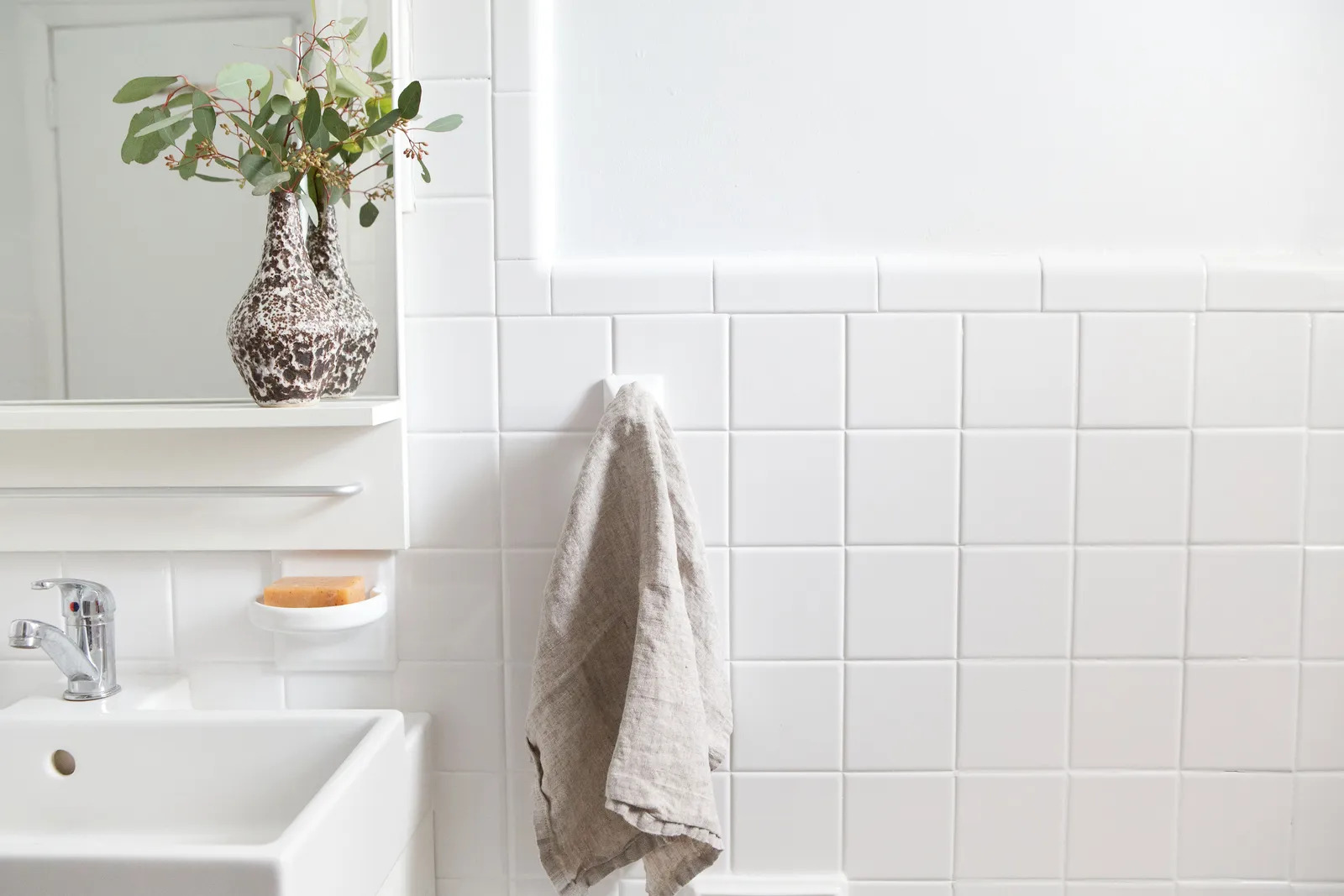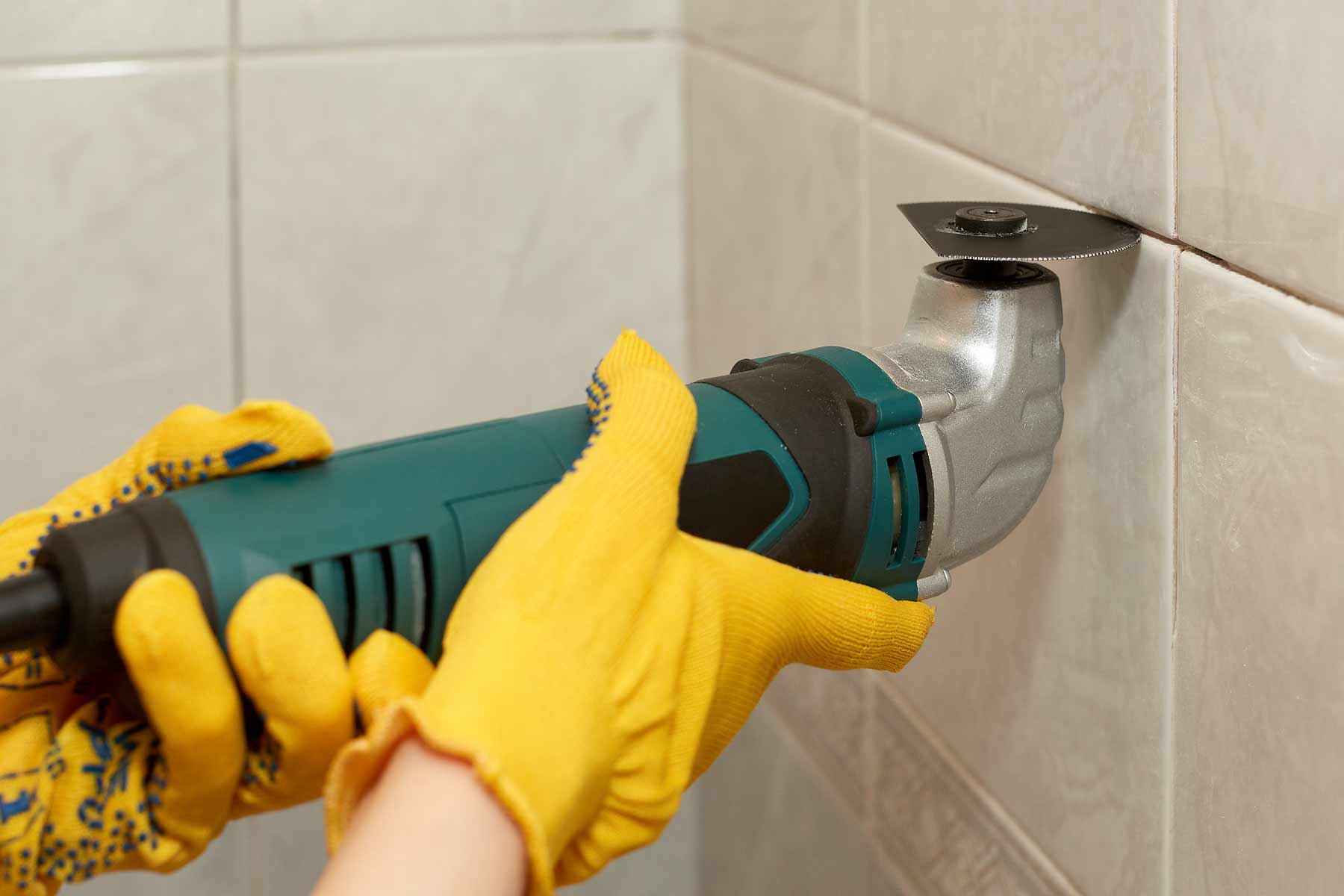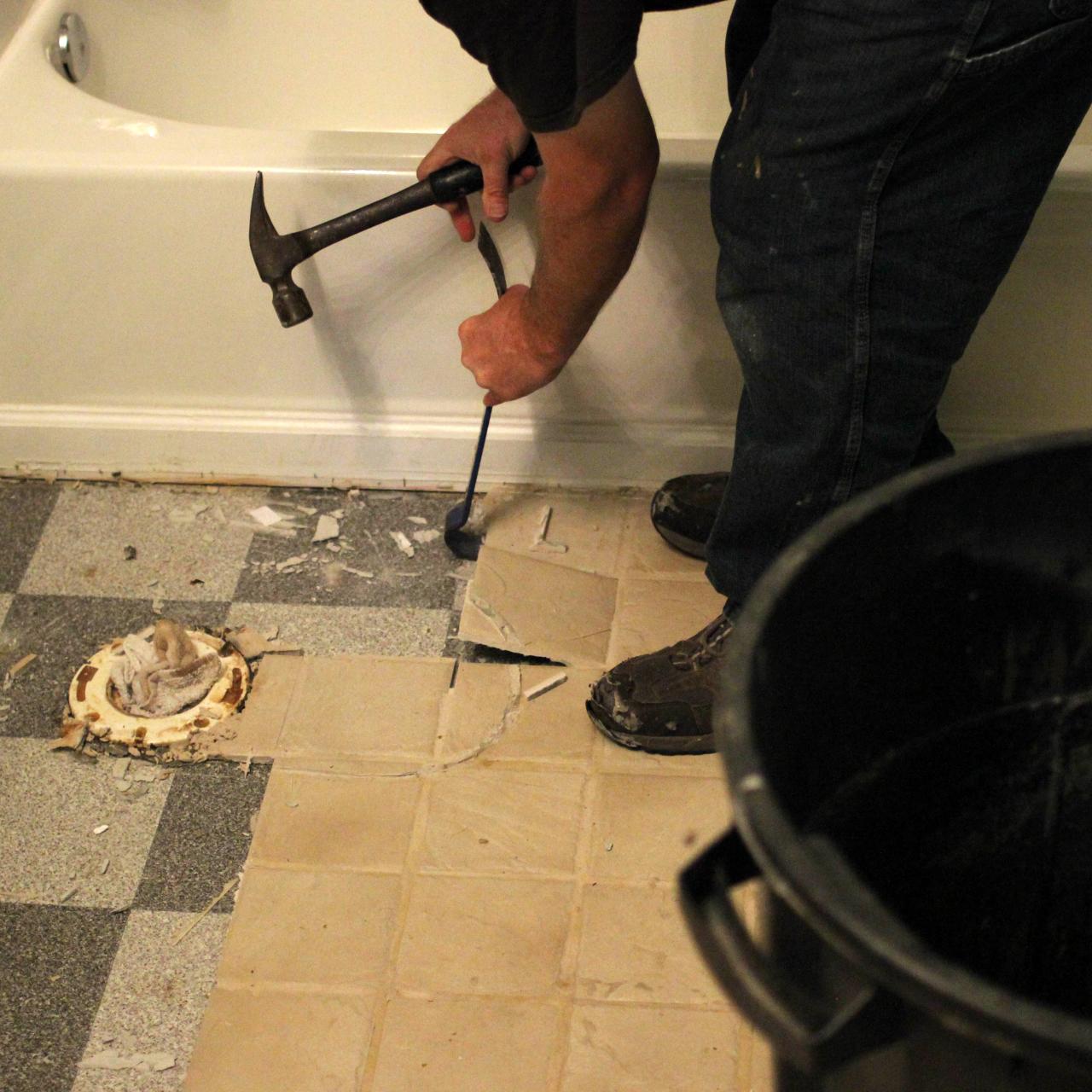Home>Furniture & Design>Bathroom Fixtures>How To Clean A Shower Tile Mold


Bathroom Fixtures
How To Clean A Shower Tile Mold
Modified: September 2, 2024
Learn effective techniques for removing shower tile mold and preventing its return with our comprehensive guide on bathroom fixtures maintenance. Keep your bathroom clean and mold-free!
(Many of the links in this article redirect to a specific reviewed product. Your purchase of these products through affiliate links helps to generate commission for Storables.com, at no extra cost. Learn more)
Introduction
Welcome to the comprehensive guide on how to effectively clean shower tile mold. Dealing with mold in the bathroom can be a daunting task, but with the right knowledge and tools, you can restore your shower to its pristine condition. Mold not only affects the aesthetic appeal of your bathroom but also poses potential health risks if left unaddressed. Therefore, it's crucial to tackle this issue promptly and efficiently.
In this guide, we will delve into the intricacies of shower tile mold, providing you with practical steps to eliminate it and prevent its recurrence. Whether you're a homeowner, a renter, or a professional cleaner, understanding the nuances of mold removal is essential for maintaining a hygienic and visually appealing shower space.
By the end of this article, you will have a clear understanding of the tools and materials required, the preparatory steps for cleaning, the actual cleaning process, and proactive measures to prevent future mold growth. Additionally, we'll explore the significance of regular maintenance to uphold the cleanliness and longevity of your shower tiles.
So, roll up your sleeves, gather your cleaning supplies, and let's embark on this journey to restore the luster of your shower tiles and bid farewell to stubborn mold!
Key Takeaways:
- Say goodbye to shower tile mold by understanding its nature, using the right tools, and following a meticulous cleaning process. Prevent future mold growth with proactive measures for a pristine shower space.
- Equip yourself with protective gear, potent cleaning solutions, and scrubbing tools to effectively combat shower tile mold. Implement preventative strategies to maintain a mold-free and visually appealing shower environment.
Read more: How To Clean A Stone Shower Tile
Understanding Shower Tile Mold
Shower tile mold is a common nuisance in bathrooms, thriving in the warm, damp environment created by regular shower use. Mold is a type of fungus that reproduces through spores and can manifest in various colors, including black, green, and pink. It not only tarnishes the appearance of your shower tiles but also poses potential health risks, especially for individuals with respiratory conditions or allergies.
Understanding the nature of shower tile mold is crucial for effective removal and prevention. Mold thrives in areas with high moisture levels and inadequate ventilation, making bathrooms an ideal breeding ground. The grout lines between tiles provide an inviting habitat for mold, as they are porous and can trap moisture, soap scum, and other organic matter.
It’s important to differentiate between mold and mildew, as they require slightly different cleaning approaches. While mildew is a surface fungus that appears as a powdery substance, mold penetrates the grout and can spread beneath the surface of the tiles, making it more challenging to eradicate.
Identifying the type and extent of mold infestation in your shower is the first step in formulating an effective cleaning strategy. Surface mold can often be addressed with basic cleaning techniques, while deeper-seated mold may require more intensive measures.
Moreover, understanding the conditions that promote mold growth is essential for long-term prevention. Factors such as poor ventilation, lingering moisture, and organic debris provide the perfect recipe for mold proliferation. By addressing these underlying issues, you can significantly reduce the likelihood of mold recurrence, ensuring a cleaner and healthier shower environment.
Now that we’ve gained insight into the nature of shower tile mold, let’s explore the essential tools and materials needed to combat this persistent intruder.
Tools and Materials Needed
Before embarking on the mission to banish shower tile mold, it’s essential to gather the necessary tools and materials to ensure a thorough and effective cleaning process. Here’s a comprehensive list of items you’ll need:
- Protective Gear: Start by equipping yourself with protective gear, including rubber gloves, safety goggles, and a face mask. These items will safeguard you from direct contact with mold spores and the cleaning agents.
- Cleaning Solutions: Invest in high-quality mold and mildew cleaning solutions. Look for products specifically formulated for shower tile mold removal, as they contain potent ingredients to combat stubborn mold stains and spores.
- Scrubbing Tools: A sturdy scrub brush or an old toothbrush will be your allies in tackling mold-infested grout lines and tile surfaces. For hard-to-reach areas, consider using a grout brush with stiff bristles to dislodge embedded mold.
- Vinegar or Hydrogen Peroxide: These natural alternatives can be effective in combating mold and mildew. Opt for distilled white vinegar or hydrogen peroxide to harness their antimicrobial properties.
- Baking Soda: This versatile household staple serves as a gentle abrasive cleaner and odor neutralizer, making it an excellent addition to your mold removal arsenal.
- Old Towels or Rags: Keep a stack of old towels or rags handy to wipe away excess moisture and cleaning residues during the process.
- Ventilation: Ensure adequate ventilation in the bathroom by opening windows and using a fan to expel damp air. Good airflow is crucial for preventing mold regrowth.
- Sealant (Optional): If the grout lines show signs of deterioration or persistent mold intrusion, consider investing in a mold-resistant grout sealant to fortify and protect the grout from future mold colonization.
By assembling these tools and materials, you’ll be well-prepared to confront the challenge of eradicating shower tile mold. Now that you’re equipped for the task, let’s move on to the preparatory steps for cleaning the shower area.
Preparing the Shower Area
Before diving into the actual cleaning process, it’s important to prepare the shower area to facilitate a smooth and effective mold removal operation. Here are the essential steps to prepare the space:
- Clear the Shower: Remove all bottles, soaps, and accessories from the shower area to access the tiles and grout lines without obstructions.
- Rinse the Tiles: Thoroughly rinse the shower tiles with water to dislodge loose debris and surface mold. This initial rinsing helps prepare the tiles for the subsequent cleaning treatment.
- Ventilate the Bathroom: Open any windows and switch on the exhaust fan to enhance ventilation and minimize moisture accumulation during the cleaning process. Adequate ventilation is crucial for preventing mold spores from resettling.
- Protect Surrounding Surfaces: Use plastic sheeting or old towels to cover the shower floor and any adjacent surfaces to prevent the cleaning solutions from causing damage or discoloration.
- Apply Protective Gear: Don your rubber gloves, safety goggles, and a face mask to shield yourself from direct contact with mold and the cleaning agents. Safety should always be a priority when dealing with mold removal.
By following these preparatory steps, you’ll create an optimal environment for effectively addressing the shower tile mold. With the shower area primed for cleaning, it’s time to delve into the meticulous process of eradicating mold and restoring the luster of your tiles. Let’s explore the next crucial phase: cleaning the shower tile mold.
To clean shower tile mold, mix equal parts water and white vinegar in a spray bottle. Spray the affected areas, let it sit for 10-15 minutes, then scrub with a brush and rinse thoroughly. Repeat as needed.
Cleaning the Shower Tile Mold
Now comes the pivotal stage of tackling the stubborn mold that has encroached upon your shower tiles. The following steps outline a comprehensive approach to effectively remove shower tile mold:
- Apply Cleaning Solution: Begin by generously applying the chosen mold and mildew cleaning solution to the affected areas. Ensure that the solution thoroughly saturates the mold-infested grout lines and tile surfaces.
- Allow Dwell Time: Let the cleaning solution sit for the recommended dwell time as specified on the product label. This allows the potent ingredients to penetrate and loosen the mold, facilitating easier removal.
- Scrub the Grout: Armed with a sturdy scrub brush or an old toothbrush, vigorously scrub the grout lines to dislodge the embedded mold. Utilize circular motions and concentrated effort on areas with heavy mold growth.
- Clean Tile Surfaces: Extend the cleaning process to the tile surfaces, ensuring that any visible mold or discoloration is diligently addressed. Pay attention to corners, edges, and grout junctions where mold tends to proliferate.
- Rinse Thoroughly: Once the mold has been effectively scrubbed, thoroughly rinse the tiles and grout with water. This step is crucial for removing residual cleaning solution and dislodged mold particles.
- Natural Alternatives: If opting for natural cleaning agents such as vinegar or hydrogen peroxide, apply these solutions directly to the mold-affected areas, allowing them to sit for a brief period before scrubbing and rinsing as outlined above.
- Dry the Area: Use old towels or rags to dry the shower tiles and grout lines. Adequate drying is essential for preventing mold regrowth and maintaining the cleanliness of the treated surfaces.
By diligently following these steps, you can effectively combat shower tile mold and restore the pristine condition of your shower. However, the battle against mold doesn’t end with its removal; proactive measures are essential to prevent its resurgence. Let’s explore the crucial strategies for preventing future mold growth in your shower.
Read more: How To Clean Shower Floor Tile
Preventing Future Mold Growth
After investing time and effort in eradicating shower tile mold, it’s imperative to implement preventative measures to inhibit its return. By addressing the underlying factors that foster mold growth, you can safeguard your shower from future infestations. Here are essential strategies to prevent the resurgence of mold:
- Maintain Adequate Ventilation: Proper ventilation is paramount in preventing moisture buildup, a key catalyst for mold growth. Ensure that your bathroom is well-ventilated during and after showering to expel excess humidity.
- Use a Squeegee: Incorporate the habit of using a squeegee to remove excess water from the shower tiles after each use. This simple practice minimizes moisture accumulation, reducing the favorable conditions for mold development.
- Address Leaks Promptly: Repair any plumbing leaks or damaged grout promptly to prevent water seepage into the walls or subfloor, which can lead to hidden mold growth.
- Regular Cleaning Schedule: Establish a routine for cleaning your shower tiles and grout to prevent the buildup of soap scum, mineral deposits, and organic matter that can serve as nutrients for mold.
- Apply Grout Sealant: Consider applying a mold-resistant grout sealant to fortify the grout lines and create a protective barrier against moisture and mold intrusion.
- Keep Shower Accessories Dry: Ensure that shower caddies, loofahs, and other accessories are thoroughly dried after use and are not left in contact with the tiles or grout.
- Inspect and Maintain Caulking: Regularly inspect the caulking around the shower fixtures and reseal any deteriorated or mold-prone areas to prevent water infiltration.
By integrating these preventive measures into your shower maintenance routine, you can effectively thwart the recurrence of mold and preserve the cleanliness and integrity of your shower tiles and grout. Consistent vigilance and proactive maintenance are key to sustaining a mold-free shower environment.
With the knowledge of preventing future mold growth firmly in place, you’re now equipped to maintain a hygienic and visually appealing shower space. Let’s conclude our journey with a recap of the essential insights and a reaffirmation of the importance of proactive maintenance.
Conclusion
Congratulations on completing this comprehensive guide on cleaning shower tile mold. Armed with the knowledge and practical insights provided in this article, you are now well-prepared to combat mold infestations and uphold the cleanliness of your shower space. Let’s recap the key takeaways and emphasize the significance of proactive maintenance:
Understanding the nature of shower tile mold is crucial for effective removal and prevention. Mold thrives in moist, poorly ventilated environments, making bathrooms an ideal breeding ground. By differentiating between mold and mildew and identifying the conditions that promote mold growth, you can tailor your cleaning and prevention strategies accordingly.
Equipping yourself with the necessary tools and materials is essential for a thorough and effective cleaning process. From protective gear to potent cleaning solutions and scrubbing tools, assembling these resources ensures that you’re well-equipped to tackle mold infestations head-on.
Preparing the shower area before cleaning sets the stage for a successful mold removal operation. Clearing the shower, rinsing the tiles, and ensuring adequate ventilation are pivotal steps in creating an optimal environment for mold eradication.
The meticulous process of cleaning shower tile mold involves applying cleaning solutions, scrubbing grout lines, and diligently addressing mold-infested tile surfaces. Thorough rinsing and drying are imperative for achieving lasting results.
Preventing future mold growth is a proactive endeavor that involves maintaining adequate ventilation, adopting good shower maintenance practices, and addressing potential moisture sources. By integrating these strategies into your routine, you can effectively safeguard your shower from mold resurgence.
As you embark on your journey to maintain a mold-free shower, remember that consistent vigilance and proactive measures are key to sustaining a hygienic and visually appealing space. By implementing the insights gained from this guide, you can enjoy a clean, mold-free shower environment that enhances the overall comfort and well-being of your home.
Thank you for joining us on this insightful exploration of shower tile mold cleaning and prevention. Here’s to a sparkling, mold-free shower space and the peace of mind that comes with a pristine and healthy bathroom environment!
Frequently Asked Questions about How To Clean A Shower Tile Mold
Was this page helpful?
At Storables.com, we guarantee accurate and reliable information. Our content, validated by Expert Board Contributors, is crafted following stringent Editorial Policies. We're committed to providing you with well-researched, expert-backed insights for all your informational needs.















0 thoughts on “How To Clean A Shower Tile Mold”